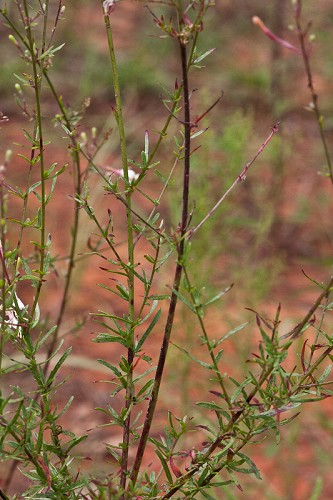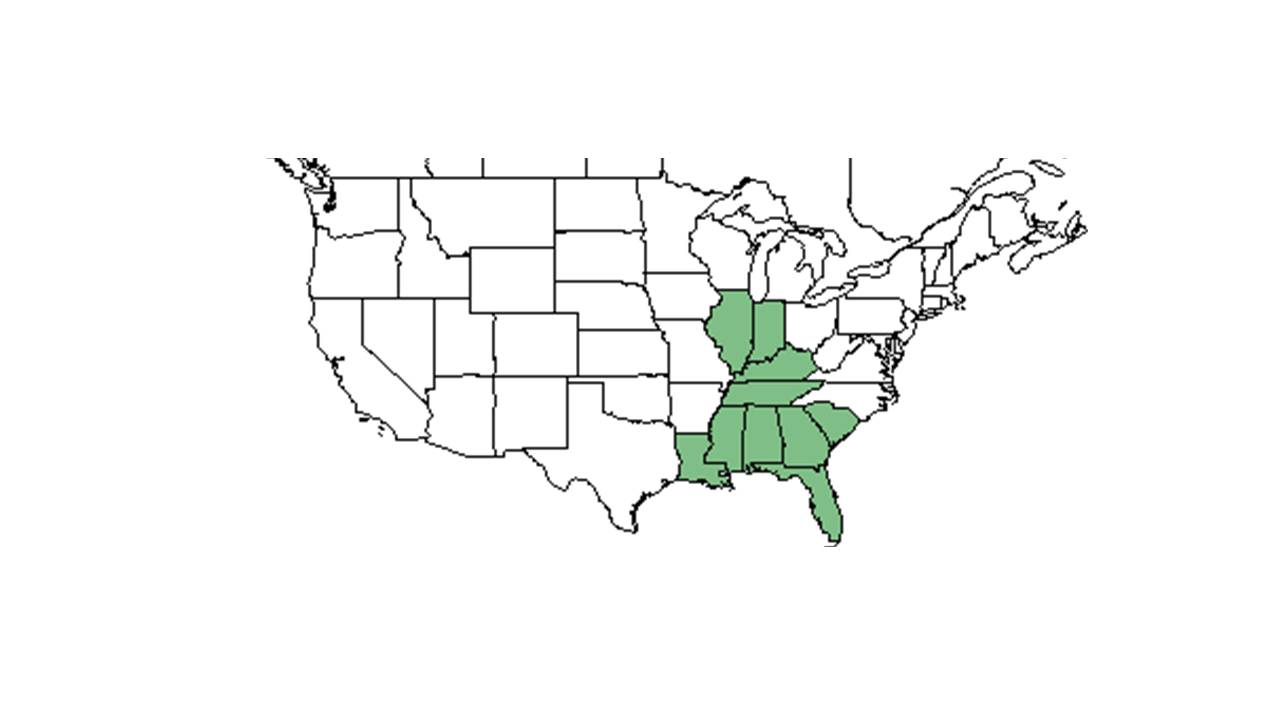Difference between revisions of "Oenothera filipes"
(→Photo Gallery) |
|||
| Line 17: | Line 17: | ||
| range_map_caption = Natural range of ''Oenothera filipes'' from USDA NRCS [http://plants.usda.gov/core/profile?symbol=OEFI3 Plants Database]. | | range_map_caption = Natural range of ''Oenothera filipes'' from USDA NRCS [http://plants.usda.gov/core/profile?symbol=OEFI3 Plants Database]. | ||
}} | }} | ||
| − | |||
Common name: slenderstalk beeblossom | Common name: slenderstalk beeblossom | ||
| − | |||
==Taxonomic notes== | ==Taxonomic notes== | ||
| + | Synonyms: ''Gaura filipes'' Spach; ''Gaura filipes'' var. ''filipes''; ''Gaura filipes'' var. ''major'' Torrey & A. Gray; ''Gaura michauxii'' Spach | ||
| + | |||
==Description== | ==Description== | ||
<!-- Basic life history facts such as annual/perrenial, monoecious/dioecious, root morphology, seed type, etc. --> | <!-- Basic life history facts such as annual/perrenial, monoecious/dioecious, root morphology, seed type, etc. --> | ||
| Line 39: | Line 39: | ||
This species has been observed to flower and fruit from August to October (FSU Herbarium). | This species has been observed to flower and fruit from August to October (FSU Herbarium). | ||
| − | ===Seed dispersal=== | + | <!--===Seed dispersal===--> |
| − | ===Seed bank and germination=== | + | <!--===Seed bank and germination===--> |
===Fire ecology=== <!--Fire tolerance, fire dependence, adaptive fire responses--> | ===Fire ecology=== <!--Fire tolerance, fire dependence, adaptive fire responses--> | ||
This species has been found in habitat that is often maintained by fire (FSU Herbarium). | This species has been found in habitat that is often maintained by fire (FSU Herbarium). | ||
| − | + | <!--===Pollination===--> | |
| − | ===Pollination=== | + | <!--===Use by animals===--> <!--Herbivory, granivory, insect hosting, etc.--> |
| − | ===Use by animals=== <!--Herbivory, granivory, insect hosting, etc.--> | + | <!--===Diseases and parasites===--> |
| − | ===Diseases and parasites=== | ||
==Conservation and Management== | ==Conservation and Management== | ||
==Cultivation and restoration== | ==Cultivation and restoration== | ||
Revision as of 15:54, 23 March 2016
| Oenothera filipes | |
|---|---|

| |
| Photo by John R. Gwaltney, Southeastern Flora.com | |
| Scientific classification | |
| Kingdom: | Plantae |
| Division: | Magnoliophyta - Flowering plants |
| Class: | Magnoliopsida – Dicotyledons |
| Order: | Myrtales |
| Family: | Onagraceae |
| Genus: | Oenothera |
| Species: | O. filipes |
| Binomial name | |
| Oenothera filipes (Spach) W.L. Wagner & Hoch | |

| |
| Natural range of Oenothera filipes from USDA NRCS Plants Database. | |
Common name: slenderstalk beeblossom
Contents
Taxonomic notes
Synonyms: Gaura filipes Spach; Gaura filipes var. filipes; Gaura filipes var. major Torrey & A. Gray; Gaura michauxii Spach
Description
Oenothera filipes is a perennial herbaceous species.
"Usually coarse, branched annuals or perennials. Leaves mostly alternate. Inflorescence terminal, spike-like, with or without axillary branches from upper leaves or bracts. Petals white to pink; stigmas 3-4 lobed. Fruit woody, indehiscent." - Radford et al 1964
"Plant to 1.5 m tall, stems pubescent. Leaves linear, elliptic or narrowly lanceolate, to 6 cm long and 6 mm wide, pubescent, glabrous, or puberulent, acute, coarsely toothed to undulate, attenuate; sessile or subsessile. Inflorescence diffusely branched, the branches uncinulate. Spelas and petals 4-7 mm long; anthers 1.6-2.5 mm long styles exerted 5-7 mm. fruits acutely 4-angled, ovoid, 3.5-4 mm long, 3-3.5 mm broad, minutely uncinulate to almost glabrous; pedicels 2-3 mm long, uncinulate." - Radford et al 1964
Distribution
Ecology
Habitat
O. filipes occurs in dry or well drained sandy soils and sandy loam (FSU Herbarium). It seems to be most common in areas that receive full sun or are only partly shaded (FSU Herbarium). It can be found in longleaf pine flatwoods or sandhills, scrub oak barrens, pine-oak woodlands, and limestone glades (FSU Herbarium). However, it can also appear in areas of disturbed habitat, including roadsides and common use recreational areas (FSU Herbarium). Associated species include Pinus palutris, Solidago, Gaillardia, Polianthes, Berchemia, Dichromema, Setaria, Hedyotis, Schoenus nigricans, Muhlenbergia carpillaris, and Quercus laevis (FSU Herbarium).
Phenology
This species has been observed to flower and fruit from August to October (FSU Herbarium).
Fire ecology
This species has been found in habitat that is often maintained by fire (FSU Herbarium).
Conservation and Management
Cultivation and restoration
Photo Gallery
References and notes
Florida State University Robert K. Godfrey Herbarium database. URL: http://herbarium.bio.fsu.edu. Last accessed: June 2014. Collectors: Loran C. Anderson, Gary R. Knight, John B. Nelson, Robert K. Godfrey, E. Tyson, R. D. Houk. Ann F. Johnson, Wilson Baker, R. Komarek, MacClendons, and G. Wilder. States and Counties: Florida: Bay, Calhoun, Gadsden, Jackson, Leon, Liberty, Okaloosa, Santa Rosa, Wakulla, and Walton. Georgia: Thomas.
Radford, Albert E., Harry E. Ahles, and C. Ritchie Bell. Manual of the Vascular Flora of the Carolinas. 1964, 1968. The University of North Carolina Press. 754-5. Print.